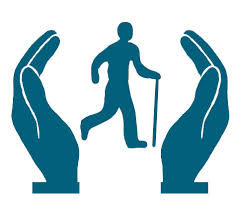 The stats on death from falls are startling – especially for the 65+. Death rates are rising, projected to be 7 up to deaths per hour for the 65+ by 2030. And that falls are the leading cause of injury death among the 65+. Did you know that the majority of hip fractures are from falling, usually sideways? Did you know that medical costs from falls was $50 billion in were projected to be $52 billion in 2020? And that the costs (estimated at $754 million in 2015) were mostly paid by Medicare and Medicaid (the latter likely in nursing homes.) So many factors contribute to the risk of falling, including lower body weakness, balance issues, medications, and home hazards.
The stats on death from falls are startling – especially for the 65+. Death rates are rising, projected to be 7 up to deaths per hour for the 65+ by 2030. And that falls are the leading cause of injury death among the 65+. Did you know that the majority of hip fractures are from falling, usually sideways? Did you know that medical costs from falls was $50 billion in were projected to be $52 billion in 2020? And that the costs (estimated at $754 million in 2015) were mostly paid by Medicare and Medicaid (the latter likely in nursing homes.) So many factors contribute to the risk of falling, including lower body weakness, balance issues, medications, and home hazards.
No surprise – tech innovators see the opportunity – usually from personal experience. As you read this, you might think about your own circle and the people who fell. Some of them died, sometimes as some have said, from the ‘long lie time’ (one hour or more) before being found or assisted. Entrepreneurs have described that long lie time (not found for hours) as the reason for a family member’s death. And it’s also the reason they entered the fall-related technology market – with a new offering.
Consider just five of these recent innovations. Research for the upcoming ‘Future of Sensors and Older Adults’ is underway – and the conversations are eye-opening. AI-enhanced fall detection offerings now include Origin Wireless with Wi-Fi enabled fall detection or KamiCare’s in-camera AI analysis, Or consider the intriguing VirtuSense (with a balance assessment tool about fall likelihood), and a sensor that says “Please don’t get up, someone will help you.” What about SensorsCall – that can send a caregiver a clip of a loud sound. Or Vayyar Care, touchless fall detection, or SafelyYou, recording the image and possible cause of the fall.
The innovators know that a crisis is ahead. And they also know that high speed Internet connectivity access is expanding – soon it will not be a barrier. Several have said that the brains of these innovations, however, should initiate ‘at the edge’ -- that is, closest to where the care recipient actually is, not in the cloud. They also know that their market entrance and visibility with these technologies cannot come soon enough (See Figures below).




